- News
- Reviews
- Bikes
- Accessories
- Accessories - misc
- Computer mounts
- Bags
- Bar ends
- Bike bags & cases
- Bottle cages
- Bottles
- Cameras
- Car racks
- Child seats
- Computers
- Glasses
- GPS units
- Helmets
- Lights - front
- Lights - rear
- Lights - sets
- Locks
- Mirrors
- Mudguards
- Racks
- Pumps & CO2 inflators
- Puncture kits
- Reflectives
- Smart watches
- Stands and racks
- Trailers
- Clothing
- Components
- Bar tape & grips
- Bottom brackets
- Brake & gear cables
- Brake & STI levers
- Brake pads & spares
- Brakes
- Cassettes & freewheels
- Chains
- Chainsets & chainrings
- Derailleurs - front
- Derailleurs - rear
- Forks
- Gear levers & shifters
- Groupsets
- Handlebars & extensions
- Headsets
- Hubs
- Inner tubes
- Pedals
- Quick releases & skewers
- Saddles
- Seatposts
- Stems
- Wheels
- Tyres
- Health, fitness and nutrition
- Tools and workshop
- Miscellaneous
- Cross country mountain bikes
- Tubeless valves
- Buyers Guides
- Features
- Forum
- Recommends
- Podcast
£1,503.00
VERDICT:
A worthy consideration if you want to go far, fast, without breaking the bank
Weight:
8,920g
Contact:
www.ribblecycles.co.uk
At road.cc every product is thoroughly tested for as long as it takes to get a proper insight into how well it works. Our reviewers are experienced cyclists that we trust to be objective. While we strive to ensure that opinions expressed are backed up by facts, reviews are by their nature an informed opinion, not a definitive verdict. We don't intentionally try to break anything (except locks) but we do try to look for weak points in any design. The overall score is not just an average of the other scores: it reflects both a product's function and value – with value determined by how a product compares with items of similar spec, quality, and price.
What the road.cc scores meanGood scores are more common than bad, because fortunately good products are more common than bad.
- Exceptional
- Excellent
- Very Good
- Good
- Quite good
- Average
- Not so good
- Poor
- Bad
- Appalling
Ribble has launched a disc brake-equipped version of its Gran Fondo, the endurance style bike that's been part of the range in rim-braked guise for a fair few years, and it's a fast, comfortable and affordable option for tapping out the miles.
Most of us aren't racers, we just want to cover good distances in relative comfort at a decent pace, something the Gran Fondo allows you to do thanks to a frame that is a solid all-rounder with excellent manners.
Ride
The first thing you notice about the way the Gran Fondo rides is its neutrality – it's a very easy bike to live with, thanks in part to its metre-long wheelbase and reasonably slack head tube angle of just 71.5 degrees on this large size model. These sorts of numbers bring a level of stability to the ride: you won't get any twitchiness at the front end which makes it an excellent bike if you're new to road bikes or you like covering large distances and don't want any surprises once fatigue levels can start to affect concentration levels.
I found that I could go out and cover 100-200km rides while barely moving my position on the bike. Whether riding uphill, down dale or tapping along on the flat I just felt like I was in the right place on the bike for balance, comfort and control.
The 554mm top tube and 173.9mm head tube allowed me to achieve a reasonably low position to get a bit streamlined without having to go fully ass-up, nose-down to achieve it. The geometry seems a sensibly thought out range of compromises.
The high-speed handling doesn't have the sharpness of a steeper, more compact race bike, but the neutral steering feel you get from the Gran Fondo is perfectly suited to the style of ride it's aimed at. It was only on some of my favourite downhills that I realised my usual gung-ho, hang-it-all-out descending style wasn't going to work with the Ribble. I found that I'd have to go into the bend a few mph slower and take a much smoother arc from outside to apex, as it wasn't quite as responsive as some of the race bikes I've ridden lately, should I need to change position mid-bend for a pothole or patch of gravel.
Stringing two close, opposing bends together required a bit of extra planning too, because the Ribble just took a little bit more work to change direction. It's not a major criticism, and if the Gran Fondo is your daily ride you'd soon adapt. The main reason I mention it is because a lot of sportives – the type of rides this style of bike is intended for – use descents on narrow, gravel-strewn country lanes which might be unfamiliar to you.
When climbing, the Gran Fondo is one of those bikes that suits staying in the saddle no matter how steep things become. I got more response from it by sitting there and tapping things out.
The frame shows a decent level of stiffness around the bottom bracket area, so if you do run out of gears and find the need to stand up, at least you know the bike won't be flexing around beneath you. It's the same if you are sprinting, even though this isn't exactly what the Gran Fondo is all about.
For an endurance machine the Ribble actually has quite a stiff ride. There doesn't seem to be as much give in the tubes as you get on some carbon fibre machines, but it stays just the right side of comfortable. I could feel every detail of the road beneath me without being vibrated and bounced to distraction, which is a pretty good balance. There are more comfortable endurance bikes out there, but there are plenty of ways to make the Ribble more compliant if you wanted – bigger tyres or a different saddle, for instance.
As far as the whole ride goes, the Ribble does exactly what it says on the tin/top tube: Gran Fondo is an Italian term that loosely translates to 'big ride' and that is exactly where this bike feels at home.
Frame and fork
The Gran Fondo is manufactured from high modulus carbon fibre, a term usually referring to fibres that go through a more thorough refining process – the more stages the fibres go through to 'smooth' them, if you like, and make them more cylindrical, the more fibres you can fit into the same area when bunched together. More carbon and less resin to fill the gaps means more strength, within reason. The end result is that the frame and fork feel pretty good. It's not as supple as some but does a good job, managing to absorb a decent level of vibration.
When it comes to tube shapes the Ribble has a lot going on, with the seat tube being the only one that's a traditional round shape. Up front the head tube is tapered, like most these days, adding stiffness at the front end for better braking and steering.
The down tube is triangular with the corners rounded off and a gentle curve to the bottom side pointing at the road. When it comes to metal tubing, the school of thought is a round tube is the best shape for strength versus weight, plus the availability of round tubing keeps costs down; carbon fibre is different as you can tweak layups and the like to increase strength in certain planes.
While some Finite Element Analysis (FEA) data – where an engineering software package passes theoretical loads through a 3D Computer Aided Design model, showing how the down tube and those it adjoins work in the real world – would be good for seeing any benefits in this shape, I certainly couldn't detect any flex when absolutely stamping on the pedals.
One thing the large down tube does allow is a sizeable cross-sectional area for joining to the bottom bracket shell, for which Ribble has chosen a Press Fit option. This design has been falling out of favour with a lot of riders and frame builders, because of less-than-ideal tolerance between frame and bearing cups leading to creaking. I didn't have any issues with the Gran Fondo from that point, but it has been a pretty dry test period with only a few wet rides.
The rear end has large square section chainstays to resist both pedalling and braking forces, while the seatstays have a gentle curve to promote a bit of flex.
Ribble has gone for a 12mm diameter thru-axle for the rear wheel rather than standard quick release dropouts. Although it's not really necessary to resist twisting forces from the disc brakes at the rear (only around 20% of the braking gets done here), it does make for easy wheel alignment to the brake calliper.
All the cabling and hoses travel through the frame internally, keeping the lines looking smooth, plus it means the Gran Fondo can use either mechanical or electronic groupsets.
The fork has a full carbon construction, so that's the steerer tube and the legs, with the disc side having internal routing for the hydraulic pipe. Ribble has decided on a thru-axle in a 12mm diameter for the fork, too, with flat mount fixings for the disc calliper.
In use, the fork shows no weakness under heavy braking loads or steering. If fork legs are lacking in stiffness it can cause understeer – when the bike doesn't turn as sharply as intended and kind of feels like it's continuing straight on. It's very minimal on a bike but brings a vagueness to the handling. You get absolutely none of that here. It's the same when it comes to resisting the braking loads of the disc brakes: you don't get any chatter or vibration and the fork shows no weaknesses whatsoever.
Finishing kit
The Gran Fondo is available in a range of builds, starting with a Shimano Tiagra Hydraulic setup for £1,333 right up to an Ultegra Di2 Hydraulic model with Mavic Cosmic Pro Carbon wheels and Deda 100 finishing kit for a cool £3,225. Using Ribble's online Bikebuilder you can pretty much spec the bike exactly how you please, and this one I've been riding is what Ribble calls its recommended model, a balance of performance and value in Ribble's eyes.
It's based around a Shimano 105 groupset, including the reasonably new RS505 shifter/brake lever combo and hydraulic callipers, plus Mavic Aksium wheels and Deda RHM02 finishing kit, all for £1,503 (plus £20 delivery if you can't collect it from the shop). It's a pretty decent build and one that works very well with the frameset. Total weight on the road.cc Scales of Truth is 8.92kg (19.6lb).
Shimano 105 is an excellent groupset – we certainly love it here at road.cc as it offers brilliant performance and looks at a very sensible price. On all of the bikes I've ridden that use these shifters, which are also designed to work with the hydraulic braking, they don't quite offer the same level of shifting pleasure as the mechanical 105 levers. The gear changes aren't quite as sharp or crisp, and the shape of the hoods means they aren't as comfortable to use as any of the others in the Shimano range.
For me, the elongated profile to fit all the hydraulic gubbins in makes them feel awkward – I like to wrap my thumb around the back of the hood and have two fingers resting on the brake lever. Where my thumb sits there is also a large section of the main body removed to allow for the brake and gear lever to swing across so you can shift up the cassette two sprockets in one go. This has quite a pronounced edge which can become irritating on long rides as it presses against your skin.
The actual spec of the gear ratios is completely up to you, but Ribble has supplied us with an 11-28 cassette and 50/34 compact chainset setup. It worked for me on the roads of the West Country, but if you want a lower ratio you can swap the cassette for one with a 32-tooth large sprocket and long cage rear mech for a little extra outlay.
Brake-wise, the Gran Fondo has been specced with 140mm diameter rotors front and rear, which is plenty large enough for the majority of road use even though most bikes have at least a 160mm up front.
The braking doesn't feel quite as powerful or tweakable as Shimano's more expensive RS-685 hydraulic setup, which sits at around Ultegra level, but I wouldn't say the Ribble ever felt under braked – I just happened to be riding the two setups side by side.
For controls, the Ribble uses Deda's entry-level RHM02 handlebar and stem, which do the job and look good for the money. The bar has a compact shape, which means even if you aren't that flexible you'll still be able to crouch down into a more aerodynamic position in the drops. Stiffness is good on both items without being boneshakers.
The saddle is a Selle Italia X1, which I found a little too firm for long distances so I did swap that out for one of my favourites and it made a massive difference to rear end comfort, making the Gran Fondo a much more enjoyable ride.
This model comes with Mavic's Aksium Disc wheels, and even though they are a little on the weighty side they are a proper fit-and-forget set of hoops no matter what the terrain. The GT Grade that I've had on long-term test has a set of these wheels on and even after more than 1,000 miles of off-road abuse they are still running smooth and true.
If you want to improve the Ribble's climbing or sprinting, though, a change of wheels would make a massive amount of difference.
The same could be said for the tyres, with the Continental Ultra Sports being quick-ish rolling and reasonably grippy. They do stand up well to road debris, too, but if you want to really boost performance something like Schwalbe's Ones would make an excellent upgrade.
Value
As it stands, I reckon this model offers very sensible value for money. Let's take a look at another direct-to-customer sales model in the form of Canyon, often considered to be some of the best value bang-for-buck bikes out there.
Its Endurace CF SL Disc 8.0 (I tested the rim brake version here) is priced at £1,799 plus £32.99 delivery for pretty much exactly the same build as this Ribble. It shares the same Aksium wheels and groupset, and even the geometry is virtually identical, as is the weight with Canyon claiming 8.6kg.
> Buyer's Guide: The best endurance and sportive bikes
With a slightly steeper head angle and shorter wheelbase, the Endurace is a slightly racier performer, offering sharper handling but costing an extra £310. Is it worth the extra outlay? I don't actually think it is, even though my riding style – fast and pretty aggressive – suits the Canyon more than the Ribble.
The Gran Fondo is very good at what it is designed to do, with sorted geometry, well-specced components and a frameset that feels a decent quality and a ride that matches. It may not be as racy in the bends as the Endurace but there is very little in it, so if you spend a lot of your time taking in long distance rides and sportives, the Ribble is pretty much made for the job.
Verdict
A worthy consideration if you want to go far, fast, without breaking the bank
road.cc test report
Make and model: Ribble Gran Fondo Disc
Size tested: Large
About the bike
State the frame and fork material and method of construction. List the components used to build up the bike.
Frame
Gran Fondo DISC Di2 Carbon Road Frame
Fork
Gran Fondo DISC Carbon Road Forks
Rear Derailleur:
105 Black (5800) 11Spd Rear Gear Short (SS)
Cassette:
11 Spd 105 5800 Cassette 11-28
Jagwire Adjuster:
Sport In-Line Adjuster Black
Front Derailleur:
105 Black (5800) 11Spd Front Braze-on
Gear Levers and Shifters:
RS505 Hydraulic Disc Brake with RS505 calipers + Mech Shifting Levers
Chain:
5800 (HG600 105 Chain) - 11 Speed
Bottom Bracket:
BB71 Road Press Fit BB Cups 86.5x41
Brake Set:
Lyra 6-Bolt Disc Brake Rotor 140mm
Chainset:
105 Black 5800 11Spd Chainset Compact 172.5 34/50
Wheelset:
Aksium Disc INTL (12x100/12x142) Shim M11 Wheelset
Tyres:
Ultra Sport 2 Rigid Tyre Black/Black 700x25mm
Handlebar Tape:
Cork Ribbon Handlebar Tape Black
Handlebars:
RHM 02 Bars Black on Black 44cm
Handlebar Stem:
Zero 2 Stem Black on Black 100mm
Seatpost:
Superleggera Alloy Seatpillar Black 27.2 350mm
Saddle:
X1 Flow Saddle
Inner Tubes:
700x18/25 SV40mm
Headset:
Gran Fondo Headset 1 1/8 - 1 1/4
Carbon expander bung for carbon fork
Carbon (1 1/8") Expanding Stem Cap
Seat Collar:
Gran Fondo Seatclamp
Tell us what the bike is for, and who it's aimed at. What do the manufacturers say about it? How does that compare to your own feelings about the bike?
From Ribble:
"Endurance comfort and stopping power – the new Gran Fondo Disc
"The brand new Gran Fondo Disc raises the bar for lightweight carbon disc bikes for longer endurance riding. It has been designed with sporting geometry with your perfect position on the bike the upmost priority. Gran Fondo is an Italian term which loosely translates to 'Big Ride' - we want you to be comfortable whatever you call a big ride, whether that is 10 miles or 110 miles."
I found the Gran Fondo a very quick and comfortable bike for ticking off the miles.
Frame and fork
Overall rating for frame and fork
8/10
Tell us about the materials used in the frame and fork?
Ribble say that the frame and fork is constructed from high modulus carbon fibre with the following details:
1. Di2 ready and internal cable routing
Compatible with all electronic groupsets from Shimano, Campagnolo and SRAM
2. Latest Flat mount disc calipers
The very latest flat mount disc brakes for greater confidence and safety
3. 30mm tyre clearance
For increased comfort over rougher roads
4. Tapered head tube
Increases steering positivity and confidence
5. S-shaped seat stays for improved comfort
Extra flex reduces road vibrations through the frame
6. 27.2mm seat post
To further enhance the comfort, the slender seat post keeps the back end comfortable
Tell us about the geometry of the frame and fork?
The Gran Fondo has quite a slack headtube of 71.5 degrees in this large size, which slows the handling down a bit compared to a race bike. The 1005mm wheelbase also aids stability at speed.
The full chart is here - http://www.ribblecycles.co.uk/ribble-gran-fondo-disc/
How was the bike in terms of height and reach? How did it compare to other bikes of the same stated size?
The large has a stack of 572mm and reach of 382mm, which is virtually identical to Canyon's Endurace CF SL Disc 8.0.
Riding the bike
Was the bike comfortable to ride? Tell us how you felt about the ride quality.
Comfortable enough but still quite firm for an endurance-style frameset.
Did the bike feel stiff in the right places? Did any part of the bike feel too stiff or too flexible?
For the intended style of riding the Gran Fondo has plenty of stiffness in all areas.
How did the bike transfer power? Did it feel efficient?
The large bottom bracket area and chunky chainstays mean you can get the power down well.
Was there any toe-clip overlap with the front wheel? If so, was it a problem?
No.
How would you describe the steering? Was it lively, neutral or unresponsive? Neutral.
Tell us some more about the handling. How did the bike feel overall? Did it do particular things well or badly?
The handling is very neutral, making the Gran Fondo a pleasure to cruise about on. If you like attacking the bends, though, it might not be quick enough for you.
Which components had the most effect (good or bad) on the bike's comfort? would you recommend any changes?
The saddle was very firm so I had to swap that, but everything else was fine.
Which components had the most effect (good or bad) on the bike's stiffness? would you recommend any changes?
For budget end alloy components the Deda bar and stem are very stiff.
Which components had the most effect (good or bad) on the bike's efficiency? would you recommend any changes?
The wheels are quite heavy which can hamper the Ribble a little when it comes to climbing and acceleration.
Rate the bike for efficiency of power transfer:
8/10
Rate the bike for acceleration:
7/10
Rate the bike for sprinting:
7/10
Rate the bike for high speed stability:
8/10
Rate the bike for cruising speed stability:
9/10
Rate the bike for low speed stability:
8/10
Rate the bike for flat cornering:
8/10
Rate the bike for cornering on descents:
7/10
Rate the bike for climbing:
8/10
The drivetrain
Rate the drivetrain for performance:
8/10
Rate the drivetrain for durability:
9/10
Rate the drivetrain for weight:
8/10
Rate the drivetrain for value:
8/10
Tell us some more about the drivetrain. Anything you particularly did or didn't like? Any components which didn't work well together?
Shimano 105 is brilliant when it comes to the cranks and mechs, but the RS505 shifters used here for the hydraulic brakes just don't have quite the same crisp gear change as the 5800 105 mechanical versions. Also, the disc brakes here don't feel like they have the same power as Shimano's more expensive options.
Wheels and tyres
Rate the wheels for performance:
7/10
Rate the wheels for durability:
9/10
Rate the wheels for weight:
6/10
Rate the wheels for comfort:
8/10
Rate the wheels for value:
8/10
Tell us some more about the wheels.Did they work well in the conditions you encountered? Would you change the wheels? If so, what for?
Mavic Aksiums are solid wheels that'll take the whacks and abuse of the local roads without issue, although you pay for it in terms of their weight.
Rate the tyres for performance:
7/10
Rate the tyres for durability:
8/10
Rate the tyres for weight:
7/10
Rate the tyres for comfort:
8/10
Rate the tyres for value:
7/10
Tell us some more about the tyres. Did they work well in the conditions you encountered? Would you change the tyres? If so, what for?
Continental's Ultra Sport tyres are average to good performers across the board. Grip is pretty good and they are durable too, but a switch to some lighter folding tyres would be a welcome upgrade.
Controls
Rate the controls for performance:
8/10
Rate the controls for durability:
8/10
Rate the controls for weight:
7/10
Rate the controls for comfort:
7/10
Rate the controls for value:
8/10
Tell us some more about the controls. Any particularly good or bad components? How would the controls work for larger or smaller riders?
The Deda RHM02 handlebar and stem are budget offerings but work very well for the money. It's all plenty stiff enough and the bar has a compact shape to allow easy access to the drops.
Your summary
Did you enjoy riding the bike? Yes
Would you consider buying the bike? Yes
Would you recommend the bike to a friend? Yes
Rate the bike overall for performance:
8/10
Rate the bike overall for value:
7/10
Use this box to explain your score
The Gran Fondo is a quick and comfortable bike to tap the miles out on, but a few tweaks could bring even more comfort while still keeping its very good value for money.
About the tester
Age: 38
I usually ride: This month's test bike My best bike is: Kinesis Aithein
I've been riding for: 10-20 years I ride: Every day I would class myself as: Expert
I regularly do the following types of riding: time trialling, commuting, club rides, sportives, fixed/singlespeed
Since writing his first bike review for road.cc back in early 2009 senior product reviewer Stu has tested more than a thousand pieces of kit, and hundreds of bikes.
With an HND in mechanical engineering and previous roles as a CNC programmer/machinist, draughtsman and development engineer (working in new product design) Stu understands what it takes to bring a product to market. A mix of that knowledge combined with his love of road and gravel cycling puts him in the ideal position to put the latest kit through its paces.
He first made the switch to road cycling in 1999, primarily for fitness, but it didn’t take long for his competitive side to take over which led to around ten years as a time triallist and some pretty decent results. These days though riding is more about escapism, keeping the weight off and just enjoying the fact that he gets to ride the latest technology as part of his day job.
Latest Comments
- Jogle 4 hours 39 min ago
Mystery over upturned campervan in Brittany...
- Barraob1 5 hours 23 min ago
Is that justification for murder?
- ktache 5 hours 31 min ago
I have recently obtained a SPD axle removal tool from eBay, ali, anodised in blue, wanted orange. I presume it's Chinese made, too much of a...
- ChasP 5 hours 32 min ago
I find it helps particularly with a brand new tyre that retains it's folded shape to seat it with an inner tube and leave for a while. You can then...
- Rendel Harris 6 hours 11 min ago
It's not available on the NHS but it can legally be prescribed by private doctors.
- ktache 6 hours 16 min ago
Was thinking about getting a Rohloff one, but then I got a Rohloff which made it a bit pointless. And, of course I only found about it when I was...
- pockstone 7 hours 33 min ago
If one's knuckles are several inches below one's ankles...?







































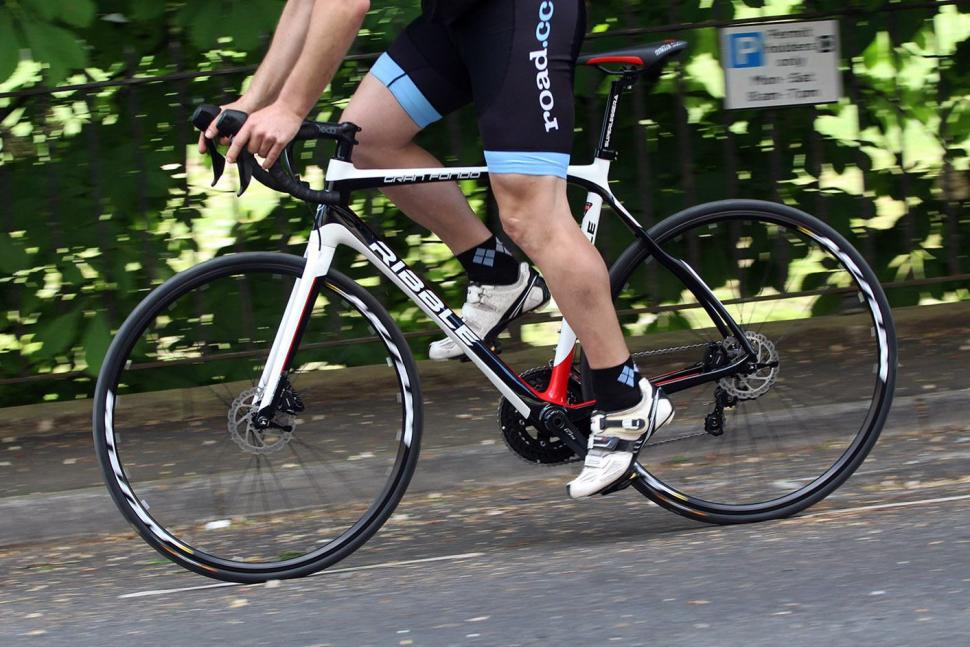
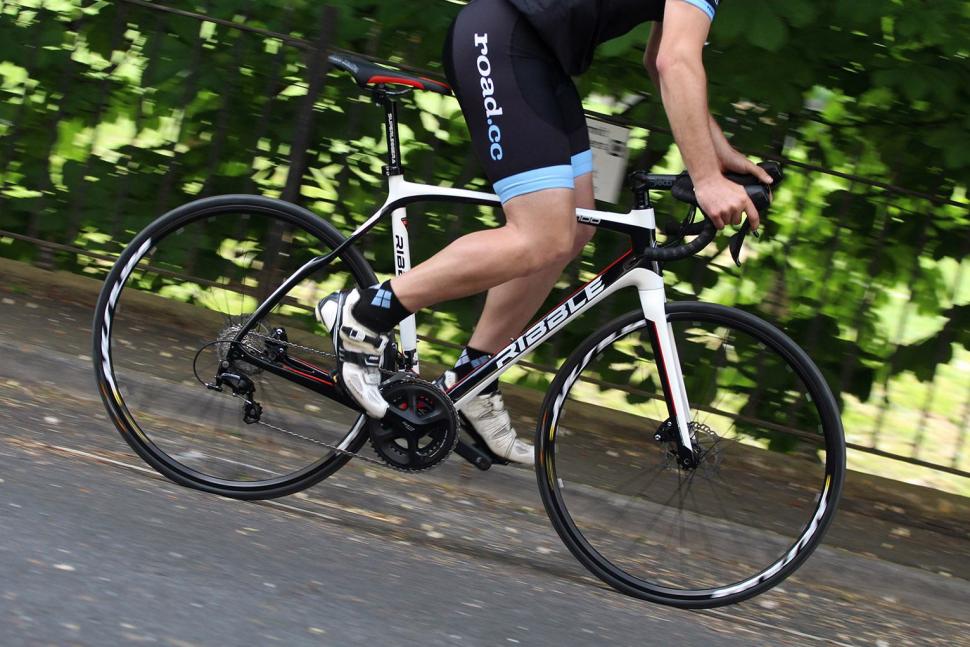




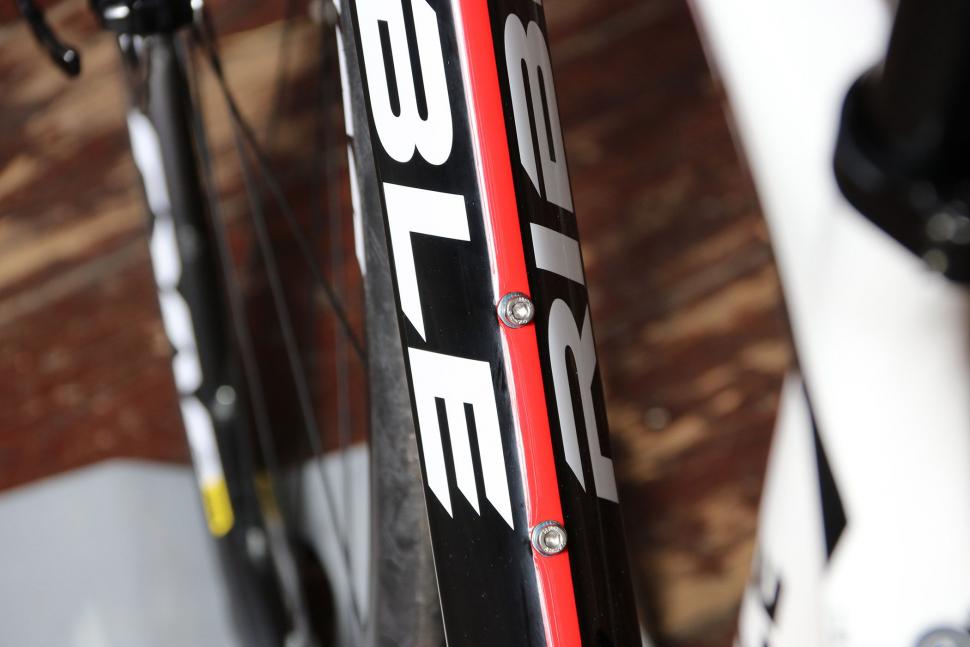



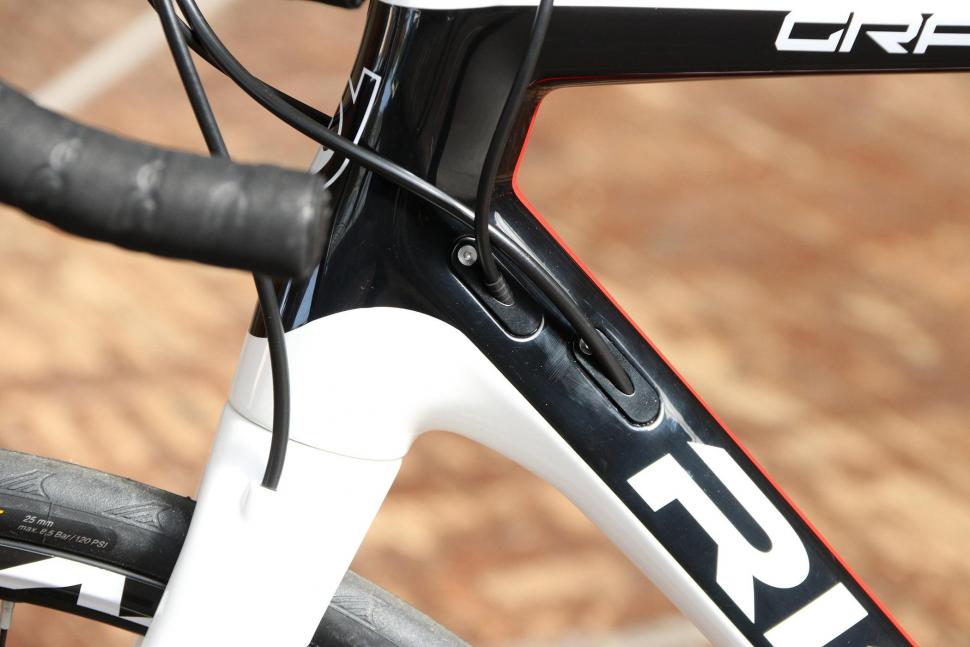
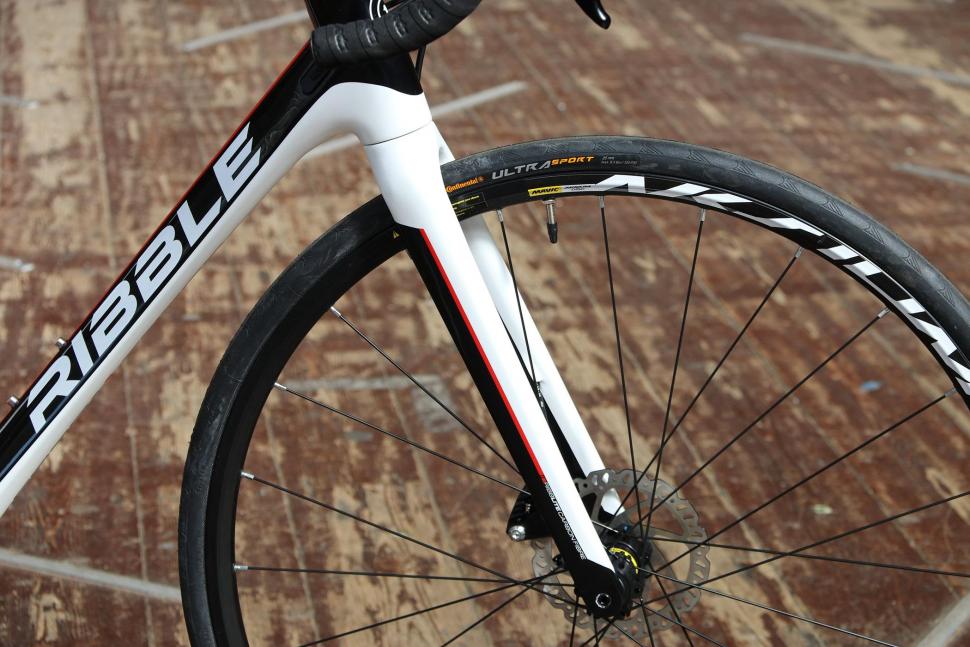
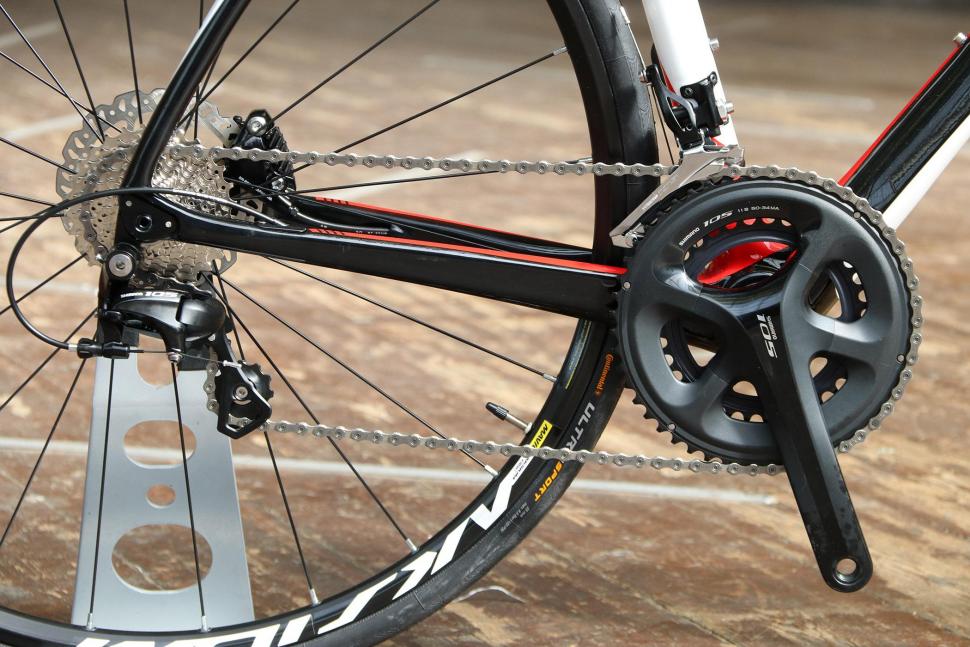
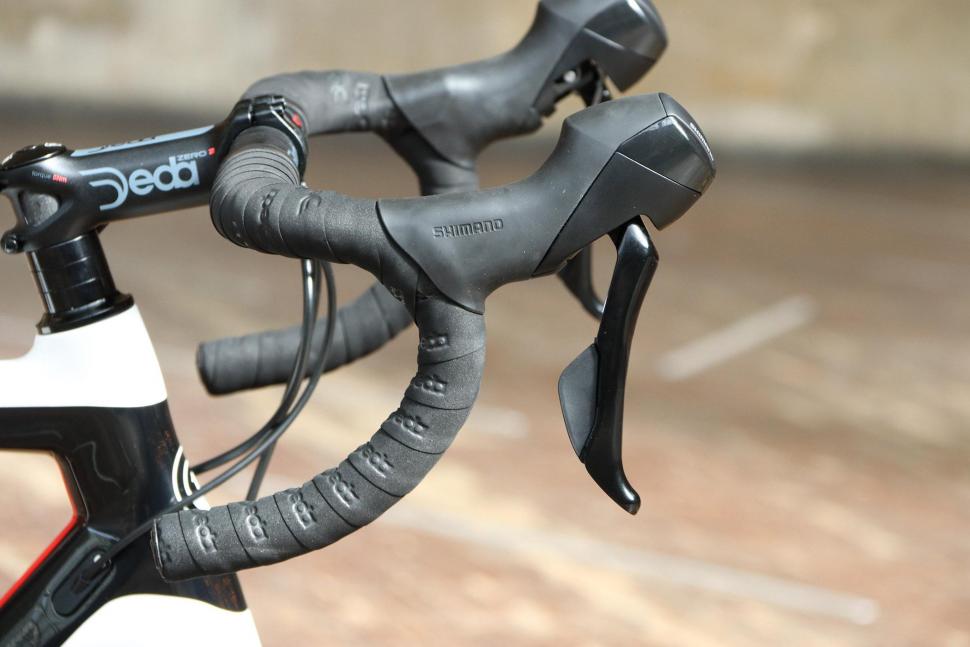
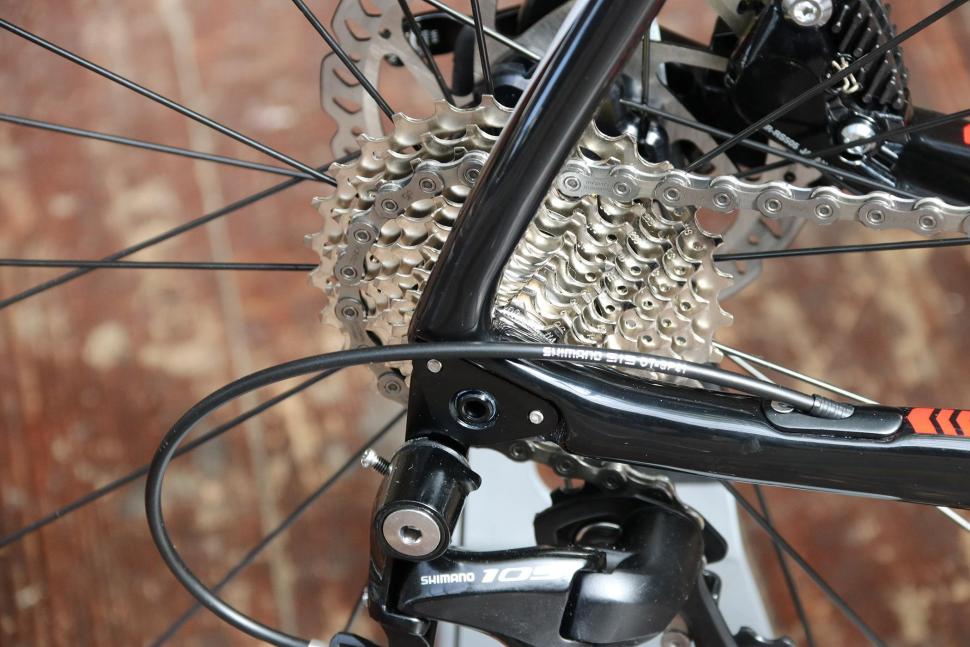
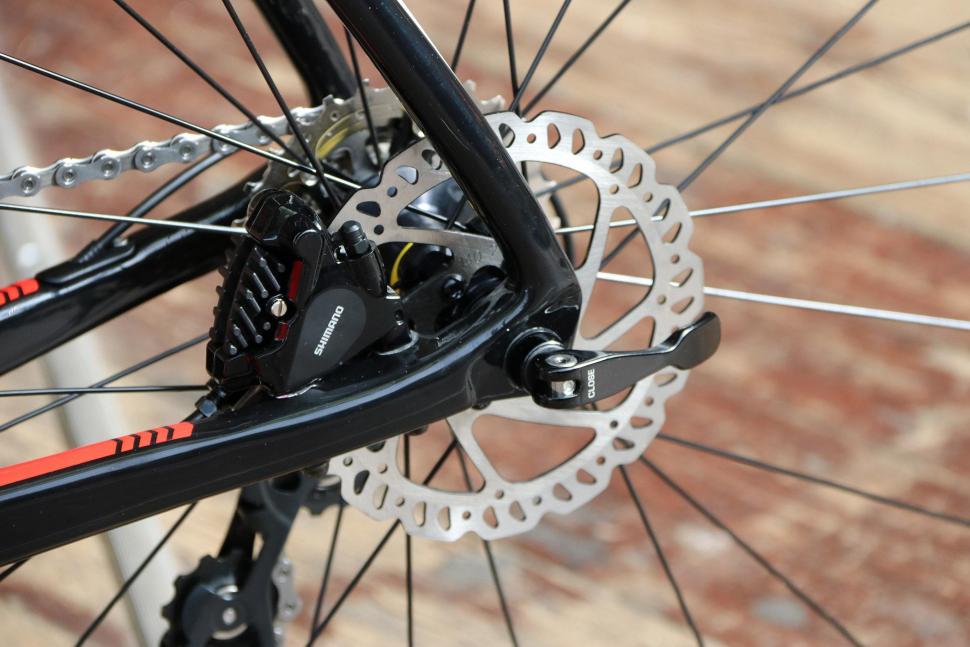
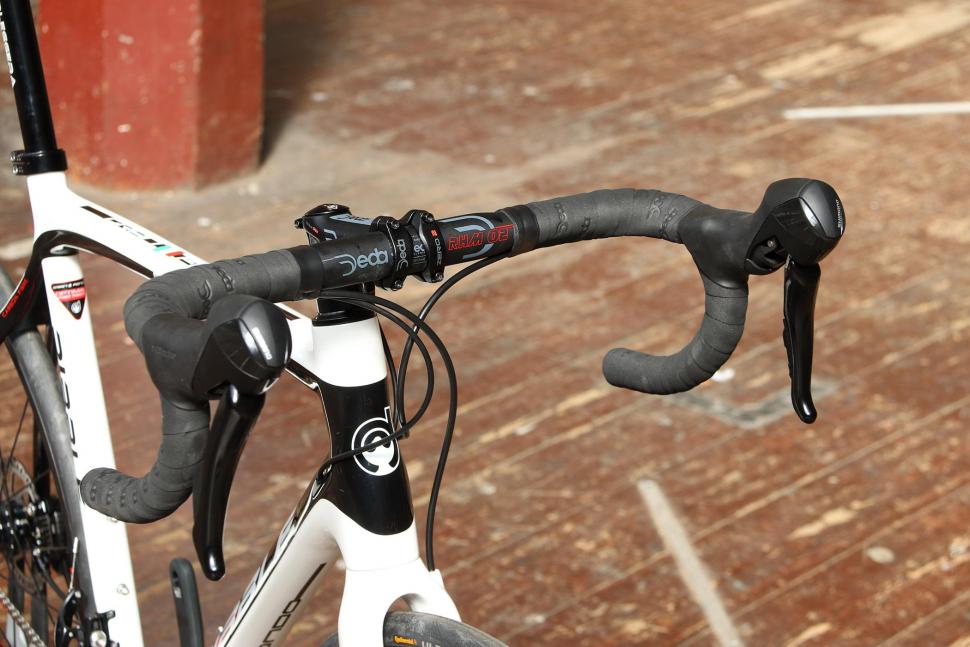
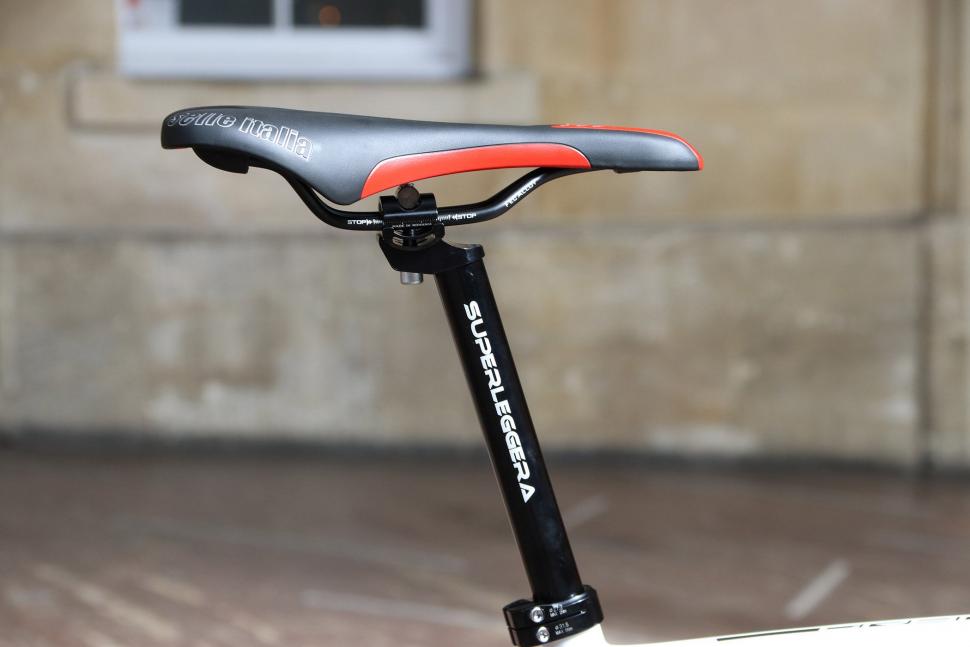
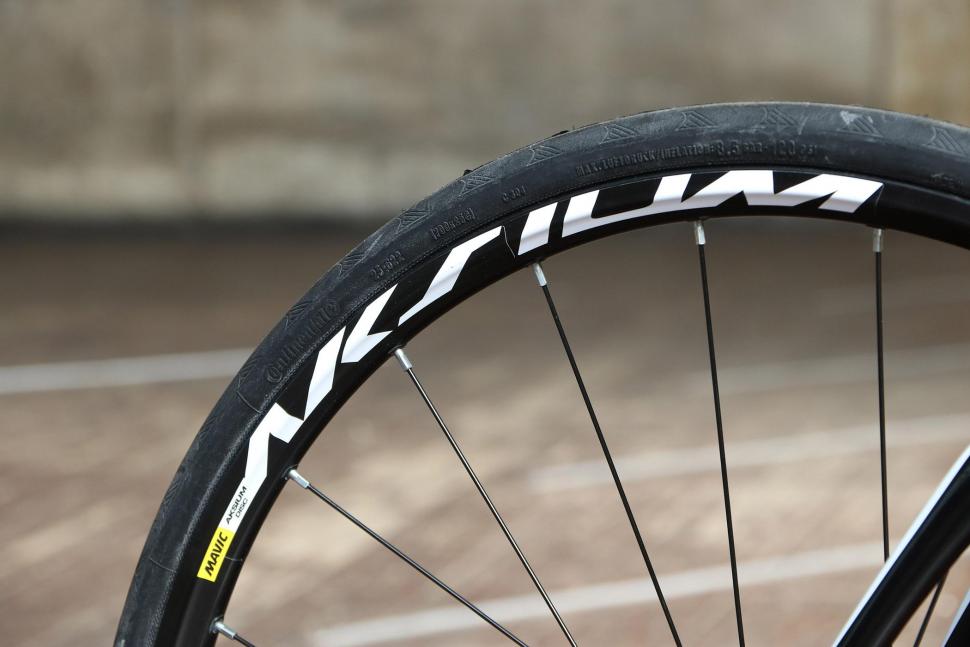




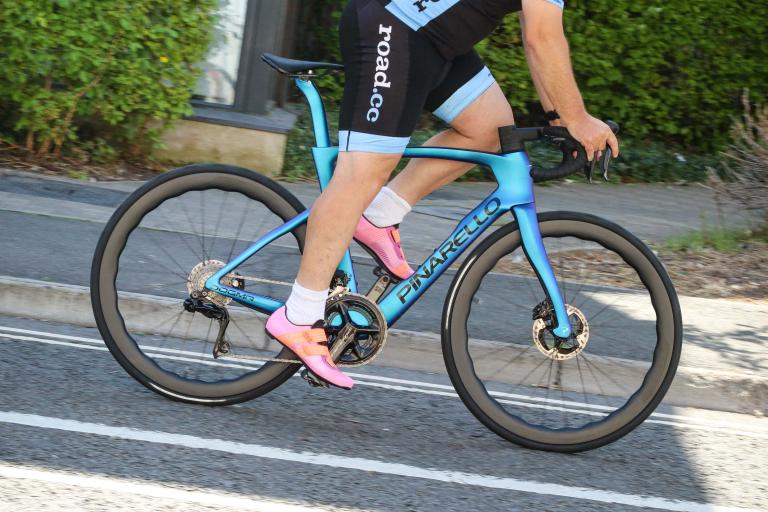
Add new comment
2 comments
My mate has the Ultegra version and it's a cracking bike for the price (he paid £1500 or so for it). Though the delivery was delayed a few times, Ribble upgraded tyres to compensate so hats off to them.
Specifically the bike is using a BB86 shell (aka "Shimano Press-Fit"). So far, from what I've seen anecdotally, it seems that's the least problematic of the various press-fit bottom bracket formats. I've ridden my TCX, itself a BB86 bike, through lots of rain and wet roads and it took quite a long while for any hint of creaking to set in.
Good on Ribble to specify the Ultra Sport IIs as well - those are ace road tires on the cheap. I had 28 mm versions of those and they went long and strong.